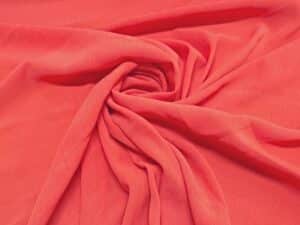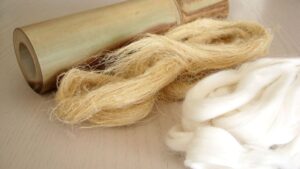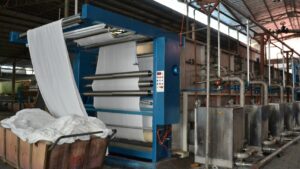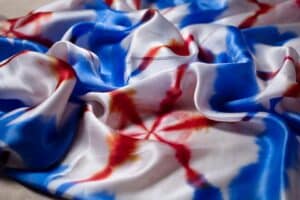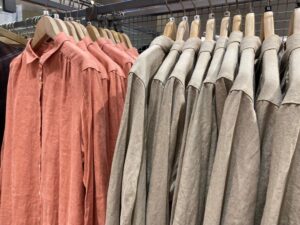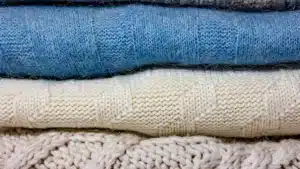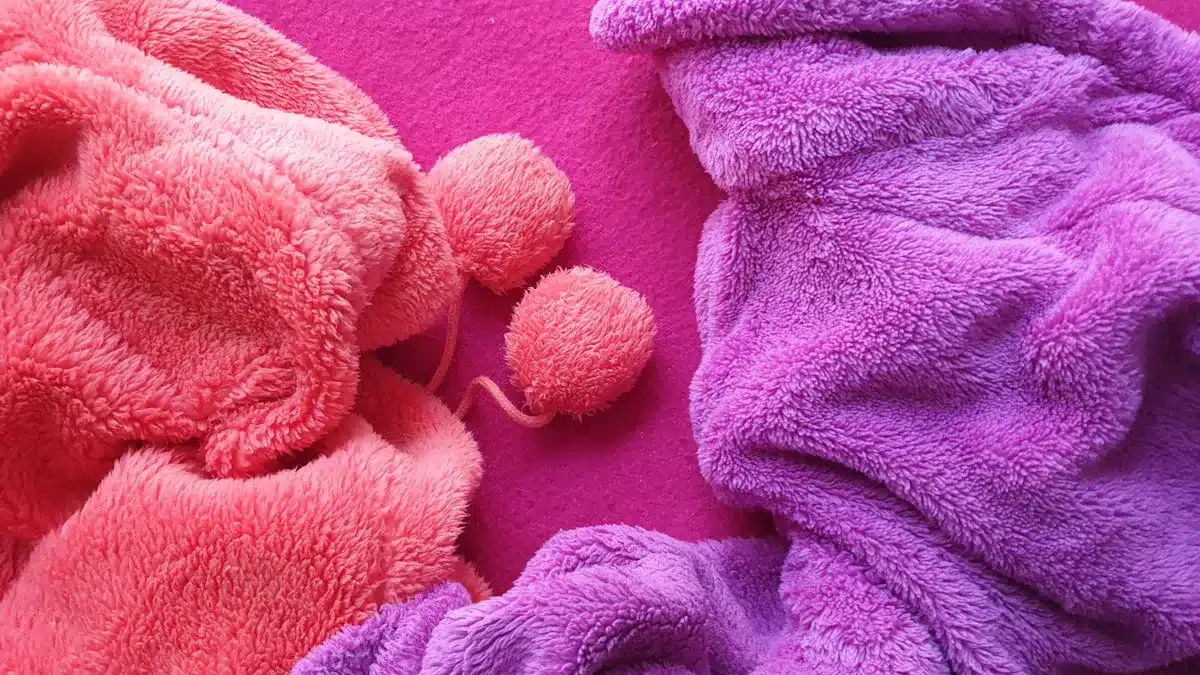
When it comes to finding the softest material for hoodies, you’ve got plenty of luxurious options. Merino wool stands out for being softer and lighter than regular wool, while bamboo fabric feels silky-smooth and hypoallergenic. High-quality cotton, like Pima or Egyptian, offers breathability and softness, though it may take time to break in. Fleece, especially Sherpa or brushed varieties, provides plush warmth, making it a favorite for cozy days. Each of these fabrics delivers a unique blend of softness, durability, and comfort, ensuring your hoodie feels as good as it looks.
Key Takeaways
Pick soft fabrics like bamboo, modal, or good cotton for comfort.
Think about breathability; cotton and wool help with sweat and comfort.
Strong fabrics last longer; choose blends or high-quality materials.
Match your hoodie to the weather; light ones for heat, heavy ones for cold.
Keep your hoodie soft by washing in cold water, using mild soap, and air drying.
Key Qualities of the Softest Material for Hoodies

Comfort
When it comes to hoodies, comfort is king. The softest material for hoodies feels gentle and cozy against your skin, making it perfect for lounging or running errands. High-quality cotton, like Pima or Egyptian, is a top choice for its smooth texture and natural softness. Fleece, especially Sherpa or brushed varieties, offers an ultimate cozy fabric experience with its plush and warm feel. Bamboo fabric is another standout, known for being soft and comfortable while also hypoallergenic. These fabrics ensure that your hoodie feels like a warm hug every time you wear it.
Breathability
Breathability is essential for keeping you comfortable throughout the day. Cotton hoodies are highly breathable, absorbing moisture and keeping you dry during activities. Wool, such as merino, combines warmth with excellent moisture-wicking properties, making it ideal for various climates. On the other hand, polyester, while durable, lacks natural breathability but is often blended with other fabrics to enhance performance. Choosing the best hoodie material with breathable qualities ensures you stay fresh and comfortable, whether you're relaxing at home or out and about.
Durability
Durability is just as important as softness when selecting the best hoodie fabric. You want a material that can withstand frequent wear and washing without losing its quality. Synthetic fabrics like polyester and nylon are known for their strength and resistance to stretching or shrinking. For natural options, high-quality cotton and wool maintain their softness and comfort over time with proper care. Here's a quick comparison of durability features:
Material | Durability Features |
|---|---|
Polyester | Resistant to stretching, shrinking, and wrinkling; retains color well; fade-resistant. |
Nylon | Strong, tear-resistant, and abrasion-resistant; often blended with other fabrics for enhanced durability. |
By choosing durable fabrics, you can enjoy your cozy hoodie for years to come without compromising on softness and comfort.
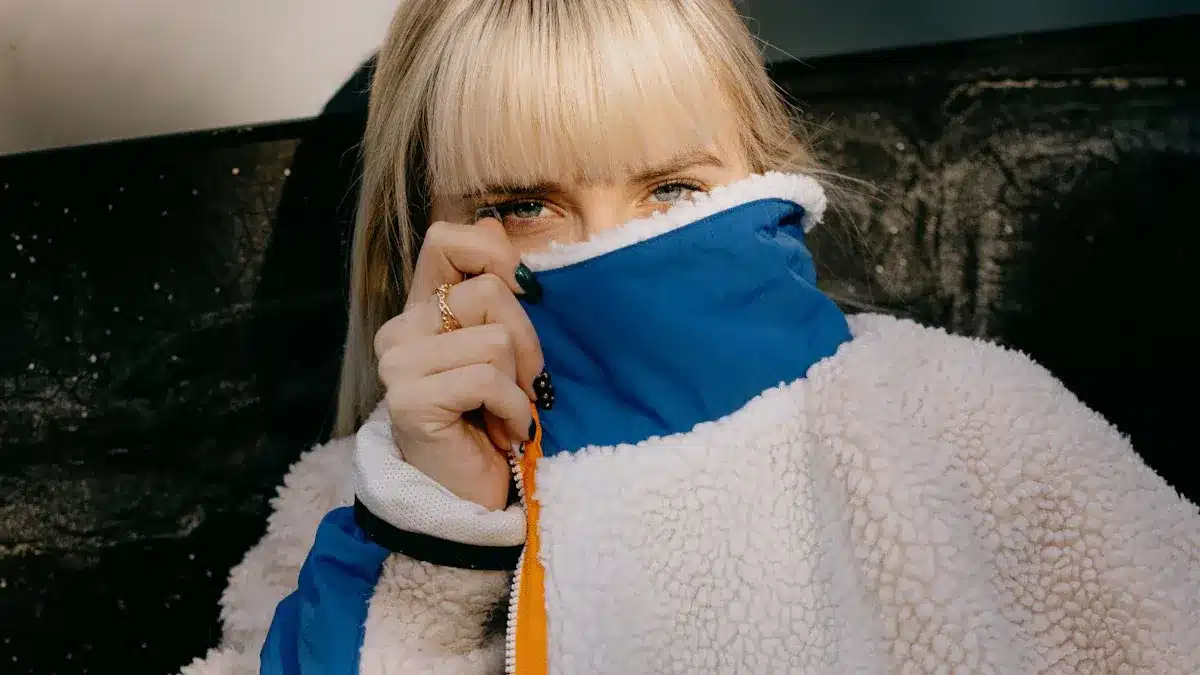
Comparing the Softest Materials for Hoodies
Merino Wool
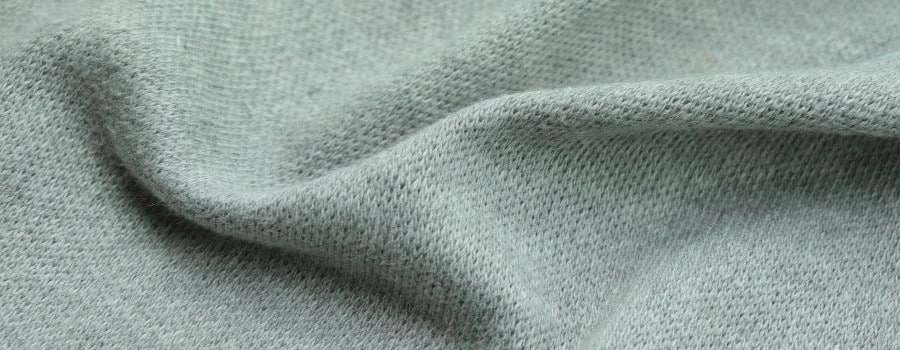
If you’re looking for a hoodie that feels soft yet performs well in different climates, merino wool is a fantastic choice. This natural fiber stands out for its ability to regulate body temperature. It keeps you warm on chilly days and stays breathable when the weather heats up. Plus, it wicks away moisture, so you’ll feel dry and comfortable no matter the activity.
Merino wool also offers durability, making it a long-lasting option for your wardrobe. Its fine fibers feel smooth against your skin, unlike traditional wool, which can sometimes feel scratchy. Whether you’re lounging at home or heading outdoors, a merino wool hoodie delivers both comfort and functionality.
Tip: Merino wool hoodies are perfect for layering during colder months or wearing solo in mild weather.
High-Quality Cotton (Pima, Egyptian)

When it comes to softness, high-quality cotton like Pima or Egyptian is hard to beat. These premium cottons are known for their long fibers, which create smoother and softer fabrics. They’re also breathable, making them ideal for sensitive skin or warmer climates.
What sets high-quality cotton apart is its durability. The tightly woven construction ensures your sweatshirt maintains its shape and softness over time. Studies show that these cottons absorb water predictably and resist fading, so your hoodie will look and feel great even after multiple washes.
Metric | Description |
|---|---|
Fiber Type | Natural fiber known for breathability and softness. |
Construction Quality | Tightly woven for durability and comfort. |
Dye Penetration | Consistent color retention without fading. |
If you want a classic sweatshirt that combines softness and longevity, high-quality cotton is one of the best hoodie materials you can choose.
Modal
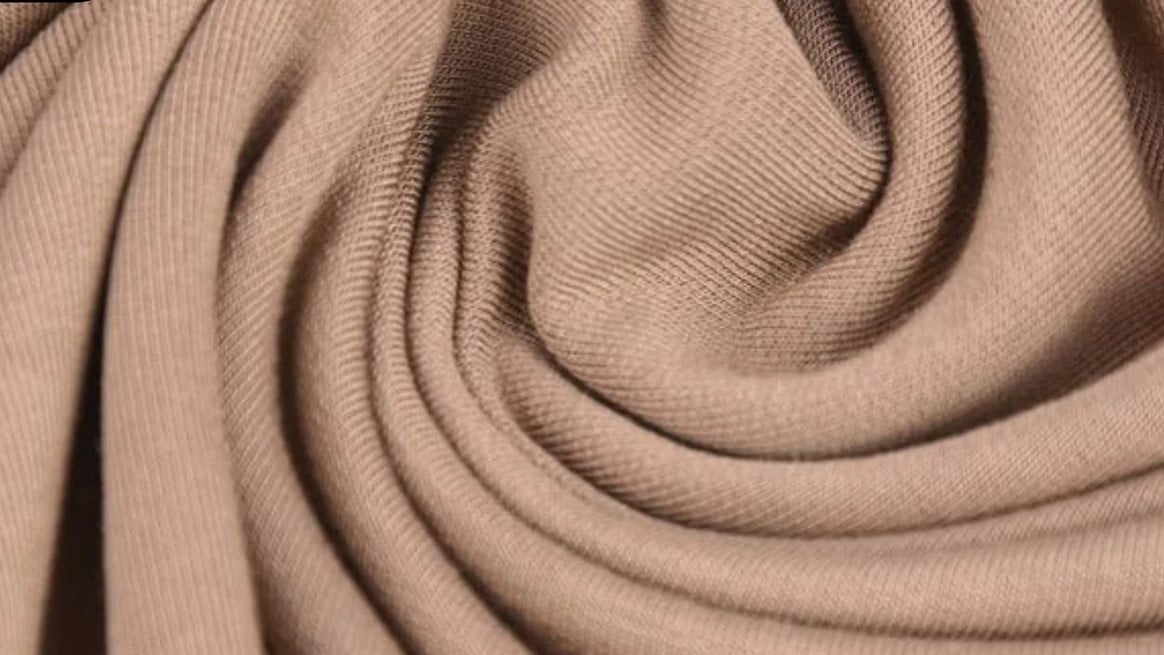
Modal is another standout when it comes to the softest sweatshirt and hoodie materials. This semi-synthetic fabric is made from beech tree pulp, giving it a silky-smooth texture that feels luxurious against your skin. It’s often blended with other fabrics to enhance its softness and durability.
What makes modal special is its ability to retain its softness even after repeated washes. Modal hoodies are lightweight and breathable, making them perfect for year-round wear. Whether you’re lounging at home or stepping out, you’ll love how this fabric feels.
Note: Modal hoodies are a great choice if you want a fabric that’s soft, durable, and easy to care for.
Fleece (Sherpa, Brushed)
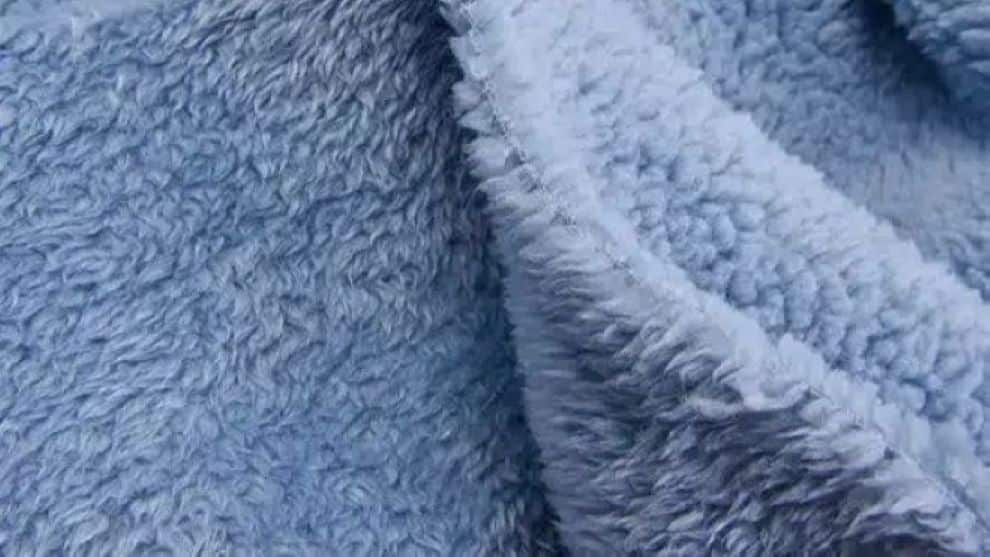
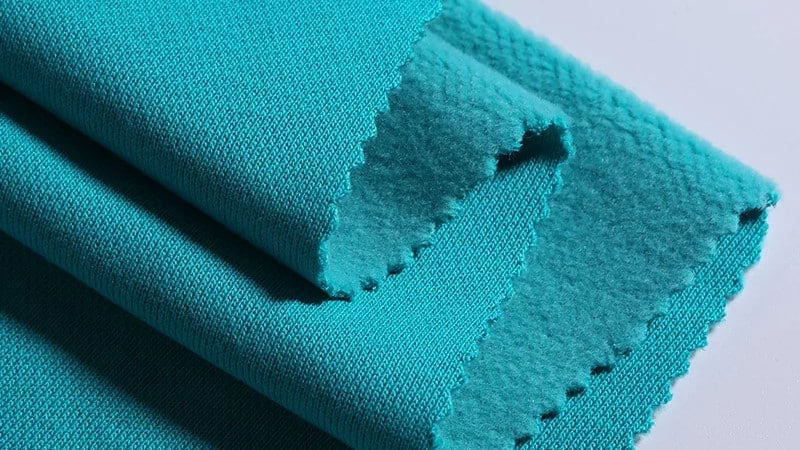
Fleece is a go-to choice when you want a hoodie that feels like a warm, cozy blanket. Sherpa fleece, with its fluffy, wool-like texture, is perfect for chilly days. It traps heat effectively, keeping you snug even in colder weather. Brushed fleece, on the other hand, offers a smoother surface while maintaining that plush, soft feel. Both types of fleece are lightweight yet insulating, making them ideal for layering or wearing on their own.
Fleece-lined hoodies are especially popular for their ability to combine comfort and practicality. The fabric wicks moisture away from your skin, ensuring you stay dry and comfortable. Plus, fleece is durable and easy to care for, so your sweatshirt will look great even after multiple washes. Whether you're lounging at home or heading out for a brisk walk, fleece hoodies deliver unmatched coziness.
Tip: Pair your fleece hoodie with jeans or joggers for a casual, laid-back look that’s perfect for any season.
Bamboo Fabric

Bamboo fabric is a rising star in the world of luxury hoodie fabric. It’s incredibly soft, often compared to silk or cashmere, and feels amazing against your skin. This fabric is also hypoallergenic, making it a great choice if you have sensitive skin. Bamboo hoodies are lightweight, breathable, and naturally moisture-wicking, keeping you cool and comfortable all day long.
What sets bamboo apart is its eco-friendliness. It’s a sustainable option that requires fewer resources to produce compared to other fabrics. Here’s a quick comparison to highlight its benefits:
Property | Bamboo Fabric | Silkysoft Touch |
|---|---|---|
Softness | Extremely soft and skin-friendly | Extremely soft |
Eco-friendliness | More eco-friendly and sustainable | Made from cotton and modal |
Breathability | Highly breathable | Less breathable |
Stretchability | Less stretchable | More stretchable |
Moisture Wicking | Good moisture absorption | Wicks more moisture |
Care Requirements | Requires less care | Requires more care |
If you’re looking for the softest material that’s also kind to the planet, bamboo fabric is a fantastic choice for your hoodie.
Blends
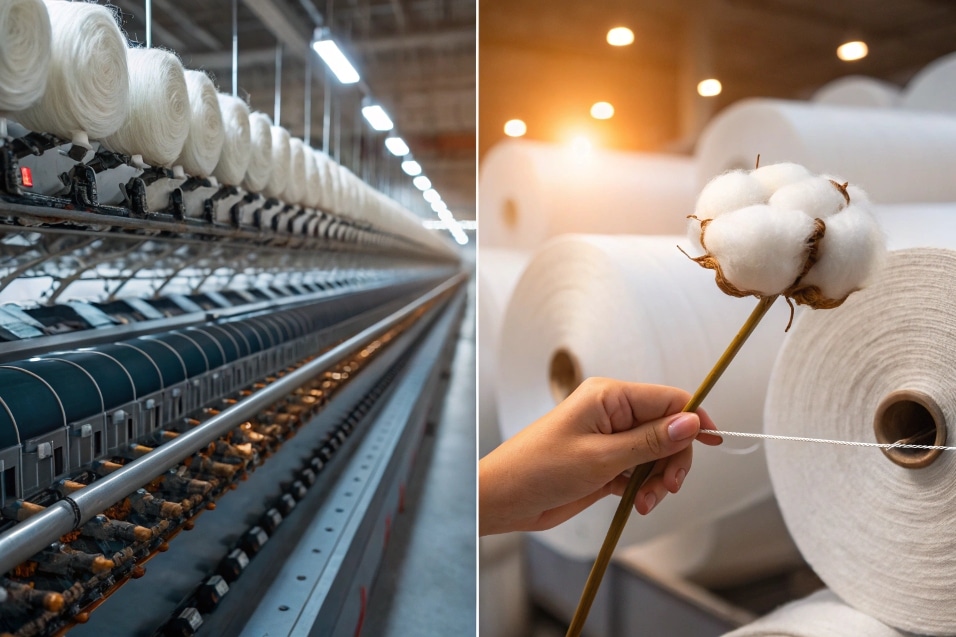
Blended fabrics combine the best qualities of different materials, creating hoodies that are versatile and high-performing. For example, cotton blends mix the softness and breathability of premium high-quality cotton with the durability and flexibility of synthetic fibers like polyester. This combination results in hoodies that are soft, long-lasting, and easy to care for.
Blends also enhance functionality. Polyester blends, for instance, improve moisture-wicking properties, making them great for activewear. Rayon, also known as Viscose, adds a silky feel, while spandex increases stretchability. Here’s how blends compare to single-fiber fabrics:
Material Type | Breathability | Durability | Comfort | Functionality |
|---|---|---|---|---|
Cotton | High | Moderate | High | Low |
Cotton Blends | High | High | High | Moderate |
Wool | Moderate | High | High | Low |
Polyester Blends | Moderate | High | Moderate | High |
Blended hoodies are perfect if you want a balance of comfort, durability, and performance. Whether you’re lounging, working out, or running errands, these fabrics adapt to your needs effortlessly.
Note: Blends are an excellent choice if you’re looking for a hoodie that combines softness with durability and functionality.
How to Choose the Best Sweatshirt Material for Your Needs

Climate Considerations
The weather plays a big role in choosing the right material for your sweatshirt. Lightweight fabrics, like cotton or bamboo, work best in warmer climates. They’re breathable and keep you cool during mild weather. For colder conditions, mid-weight or heavyweight materials, such as fleece or wool, provide the warmth you need.
Here’s a quick guide to help you match fabric weight with the weather:
Fabric Weight | Suitable Weather Conditions |
|---|---|
Lightweight (200-250 GSM) | Perfect for summer or mild weather. |
Mid-weight (250-320 GSM) | Great for year-round use. |
Heavyweight (320-400 GSM) | Ideal for cold weather. |
Extra Heavyweight (over 400 GSM) | Best for extremely cold climates. |
If you live in a place with changing seasons, a mid-weight hoodie offers versatility. It balances breathability and insulation, making it a go-to option for most weather conditions.
Intended Use
Think about how you’ll use your sweatshirt. Are you looking for something cozy to lounge in, or do you need a durable option for outdoor activities? For casual wear, soft materials like ring-spun cotton or blends are excellent. They feel luxurious and are perfect for relaxing. If you’re planning to stay active, polyester blends or nylon are better. They’re durable, moisture-wicking, and hold up well during workouts or outdoor adventures.
Here’s a breakdown of materials based on their intended use:
Material Type | Characteristics | Intended Use |
|---|---|---|
Microfleece | Lightweight, soft, moderate warmth, ideal for layering. | Transitional weather, light outdoor activities. |
Sherpa Fleece | High-pile, plush texture, excellent warmth and comfort. | Extremely cold conditions, high-performance gear. |
Cotton | Soft, breathable, comfortable for casual wear. | Light activity, lounging. |
Polyester | Durable, moisture-wicking, and fade-resistant. | Activewear, frequent use. |
Choosing the right material ensures your sweatshirt meets your needs, whether you’re lounging at home or braving the elements.
Personal Sensitivities
Your skin’s sensitivity matters when picking the softest sweatshirt material. If you have sensitive skin, natural fabrics like cotton or bamboo are great choices. They’re hypoallergenic and gentle on the skin. Wool, while warm, can sometimes feel itchy. In that case, merino wool is a softer alternative.
For those who prioritize eco-friendliness, bamboo fabric stands out. It’s sustainable, soft, and perfect for anyone looking to reduce their environmental footprint. If you’re unsure about a material, try blends. They combine the best qualities of different fabrics, offering comfort and functionality without compromising on softness.
By considering these factors, you’ll find a sweatshirt that feels amazing and suits your unique preferences.
Tips for Maintaining the Softest Material for Hoodies
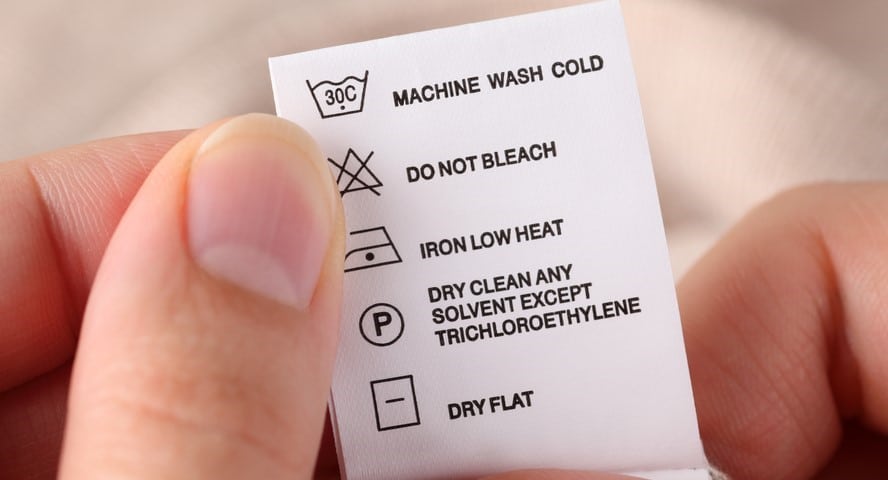
Washing and Drying Best Practices
Keeping your hoodies soft and cozy starts with proper washing and drying. Follow these tips to maintain their luxurious feel:
Use cold water and a gentle detergents to protect the fabric's integrity. This prevents shrinking and fading, especially for delicate materials like bamboo or modal.
Choose a mild detergent to avoid harsh chemicals that can damage the fibers. Gentle detergents clean effectively without leaving residue that dulls colors.
Avoid overloading your washing machine. Overcrowding increases friction, which can wear down the fabric over time.
Air drying is your best bet for preserving softness. Lay your hoodie flat to dry and keep it out of direct sunlight to prevent fading.
If you prefer using a dryer, opt for a low heat setting. Remove the hoodie promptly to avoid wrinkles and maintain its shape.
These simple steps ensure your sweatshirt stays soft and comfortable for years to come.
Preventing Fabric Damage
Soft hoodie materials require extra care to prevent damage. Here’s how you can keep them in top condition:
Wash similar colors together and use a color-safe detergent to prevent fading.
Turn your hoodie inside out before washing to reduce friction and protect the outer surface.
For delicate fabrics, hand washing in cold water is a great option. Avoid wringing the fabric; instead, gently press out excess water.
Use a mesh laundry bag for machine washing to protect your hoodie from snagging or tangling.
To deal with pilling, use a fabric shaver and always wash your hoodie inside out.
By following these tips, you’ll keep your hoodie looking and feeling brand new.
Using Fabric Softeners and Alternatives
Fabric softeners can help maintain the softness of your hoodies, but they’re not always necessary. Here’s what you need to know:
Use fabric softeners sparingly, as overuse can leave a waxy residue that reduces breathability.
Consider natural alternatives like white vinegar. Adding a small amount to the rinse cycle softens fabrics without harsh chemicals.
Wool dryer balls are another great option. They reduce drying time and help fluff up your hoodie, keeping it soft and cozy.
These alternatives are gentle on your sweatshirt and the environment, making them a win-win for you and your favorite hoodie.
When it comes to comfort, the softest hoodie materials like bamboo, modal, high-quality cotton, fleece, and blends truly stand out. Each fabric offers unique benefits. For instance:
Softness and Comfort: Cotton and bamboo are perfect for sensitive skin, while fleece provides a cozy, plush feel.
Climate Suitability: Fleece keeps you warm on chilly days, while breathable fabrics like cotton and bamboo are ideal for warmer weather.
Choosing the right material depends on your preferences, climate, and how you plan to use your hoodie. With proper care - like gentle washing and air drying - you can keep your favorite hoodies soft and comfortable for years to come.
Tip: Always consider your lifestyle and local weather when picking a sweatshirt material. It makes all the difference in comfort and durability!
FAQ
What is the best material for a hoodie if I have sensitive skin?
Natural fabrics like bamboo and high-quality cotton are perfect for sensitive skin. They’re hypoallergenic, soft, and breathable, ensuring maximum comfort without irritation.
Tip: Look for hoodies labeled as organic cotton or made from sustainable materials for added skin-friendliness.
What makes fleece hoodies so warm and cozy?
Fleece traps heat effectively due to its insulating fibers. Sherpa fleece, with its fluffy texture, mimics wool’s warmth, while brushed fleece offers a smoother, plush feel. Both are lightweight yet incredibly warm.
What is the most durable hoodie material?
Blended fabrics, like cotton-polyester mixes, are highly durable. They resist shrinking, stretching, and fading, making them ideal for frequent wear. Synthetic fibers like nylon also add strength and longevity to hoodies.
What’s the difference between Pima cotton and regular cotton?
Pima cotton has longer fibers than regular cotton, making it softer, smoother, and more durable. It resists pilling and fading, ensuring your hoodie stays comfortable and looks great over time.
What is the easiest hoodie material to care for?
Polyester blends are the easiest to maintain. They’re wrinkle-resistant, quick-drying, and hold their shape well. For natural options, high-quality cotton is simple to care for with proper washing and drying practices.
Note: Always check the care label for specific instructions to keep your hoodie in top condition.


